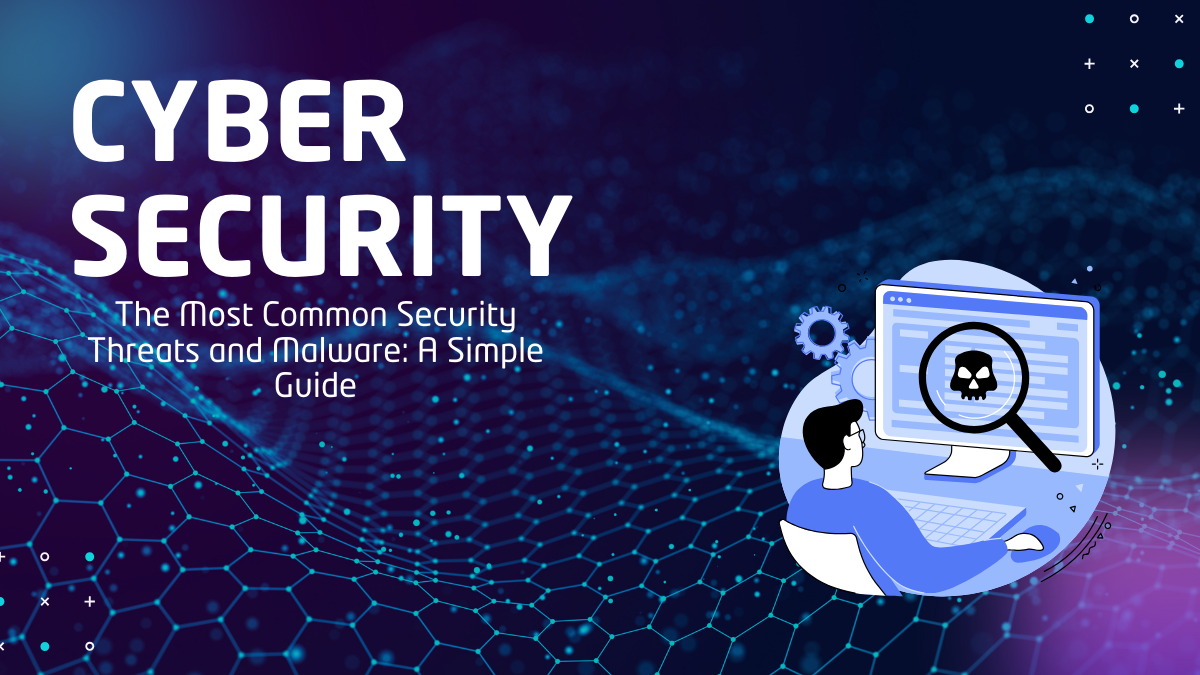Staying Safe in the Digital World: Understanding Common Threats
Our digital lives are deeply integrated with technology, making it essential to understand the potential dangers lurking online. Security threats and malware can compromise our devices and data, so awareness is key to protection. Let’s talk about what to look out for and how it happens:
1. Viruses:
These are malicious code snippets that attach to legitimate programs. When an infected program runs, the virus spreads to other programs and can cause damage like data deletion or system corruption.
Spread: Often via infected email attachments, malicious downloads, or infected USB drives.
2. Worms:
Unlike viruses, worms are self-replicating malware that can spread across networks without needing a host program. They exploit vulnerabilities to propagate and can consume system resources or create backdoors for other threats.
Spread: Through network weaknesses, infected emails, or compromised websites.
3. Trojan Horses:
These deceptive programs disguise themselves as legitimate software. Once executed, they can perform malicious actions like stealing credentials, logging keystrokes, or granting remote access to attackers.
Spread: Through deceptive websites, bundled with other software, or via social engineering tactics.
4. Ransomware:
This type of malware locks your computer or encrypts your files, demanding a ransom payment for their release. Paying doesn’t guarantee recovery and encourages criminal activity.
Spread: Through phishing emails, malicious websites, or infected software.
5. Spyware:
Spyware secretly monitors your computer activity, collecting data like browsing habits, keystrokes, and personal information, which is then sent to attackers. It can slow down your system and compromise privacy.
Spread: Often bundled with free software, downloaded from malicious sites, or installed through security flaws.
6. Adware:
Adware displays unwanted advertisements on your computer. While not always directly malicious, it can be intrusive, track your browsing, and sometimes bundle other harmful software.
Spread: Frequently comes with free software downloads.
7. Phishing:
This social engineering tactic involves tricking you into revealing sensitive information by impersonating legitimate organizations through emails, texts, or fake websites.
How it works: Exploits trust and urgency to get you to click malicious links or provide personal data.
Protecting Yourself:
A combination of caution and good security practices is vital:
- Install and maintain antivirus/anti-malware software: Regularly update software from reputable vendors like Norton or McAfee.
- Keep software updated: Updates often include crucial security patches.
- Be wary of emails and links: Avoid clicking suspicious links or opening unknown attachments.
- Use strong, unique passwords: Employ a mix of characters and avoid reusing passwords. Consider a password manager.
- Enable multi-factor authentication (MFA): Add an extra security layer to your accounts.
- Download cautiously: Only download software from trusted sources.
- Use a firewall: This acts as a barrier against unauthorized access.
- Back up your data regularly: Protect against data loss from attacks or system failures.
- Be skeptical online: If an offer seems too good to be true, exercise caution.
For a more basic understanding of some of these concepts, check out our article for beginners: https://rwa.tmw.temporary.site/website_8d3a2795/staying-safe-online-easy-steps-for-beginners/

